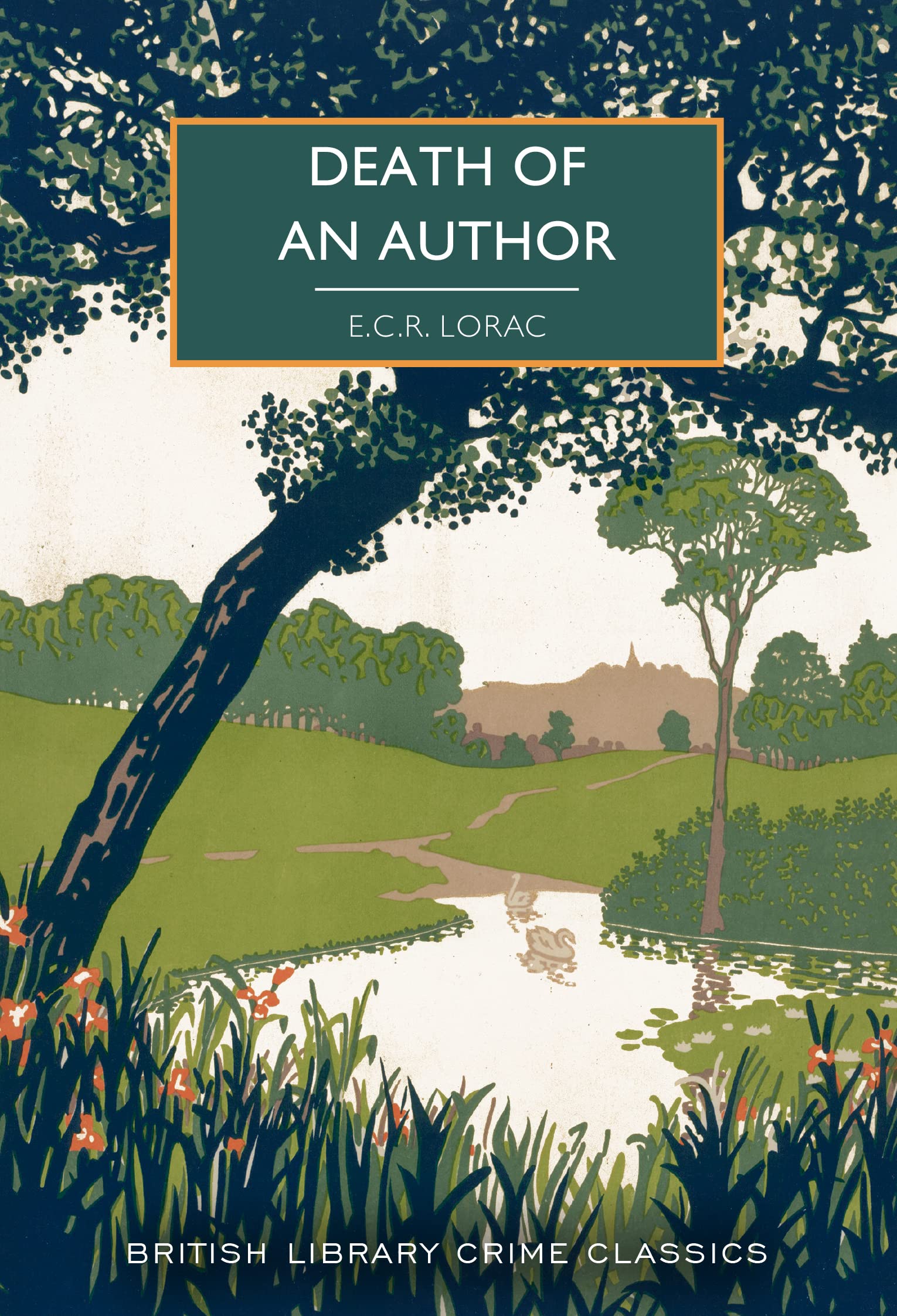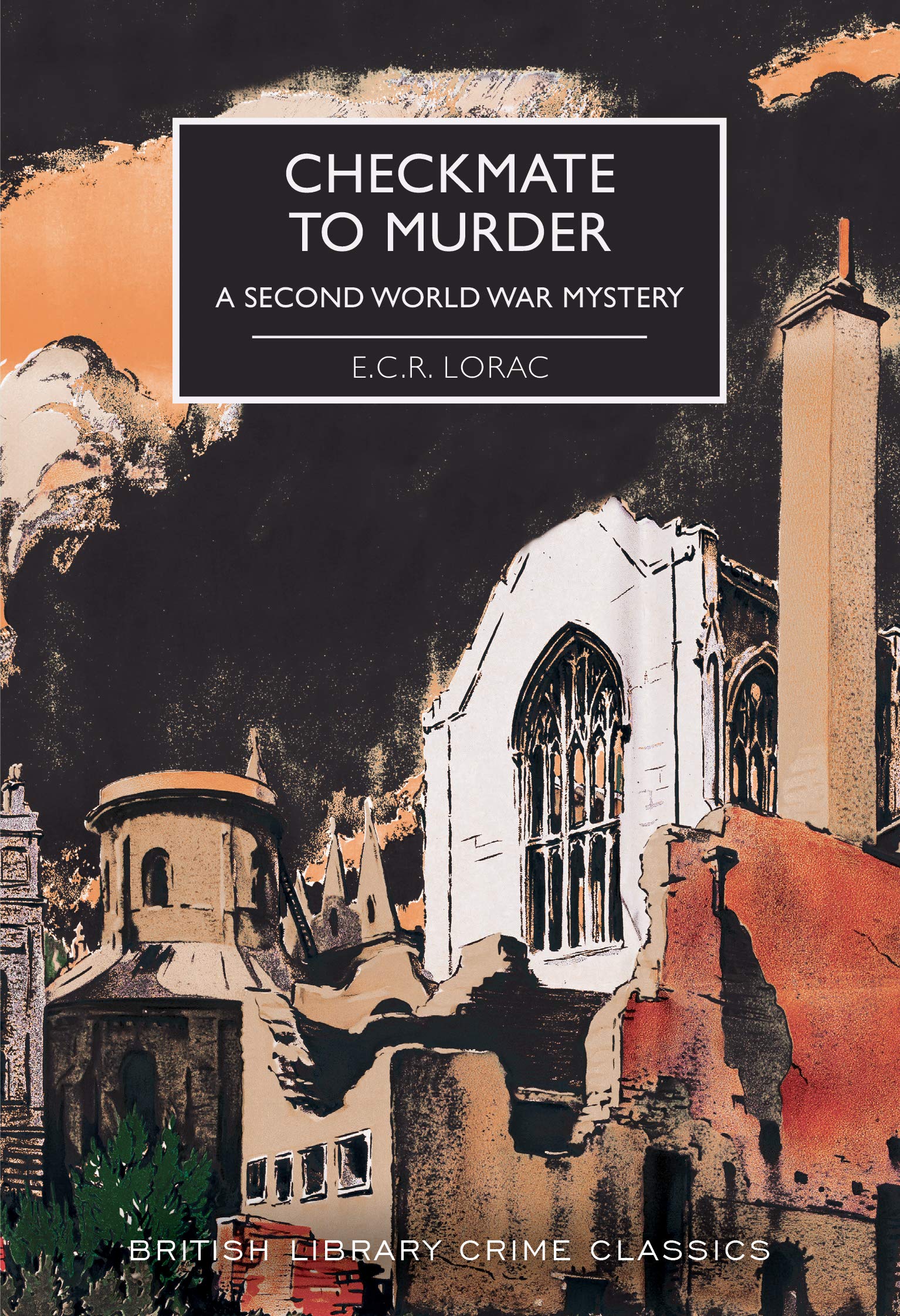It looks like I might be making these ‘Ten Favourite…’ lists a thing, having previously done fictional detectives and British Library reissues; today, we turn our attention to the great work done by Ramble House, publishers of an unusual mix of crime and weird fiction.
Continue readingE.C.R. Lorac
#1103: Death of an Author (1935) by E.C.R. Lorac

![]()
![]()
![]()
![]()
![]()
I’ll let you in on a secret: much as I struggle to read two books by the same author close together, there are certain writers whose diversity of approach enables me to sidestep this consideration. One such personage is Erle Stanley Gardner, and I’m starting to suspect that E.C.R. Lorac might be another. Lorac’s country-set novels featuring Inspector Robert Macdonald are very different beasts to his London-based cases, and Death of an Author (1935) — not featuring Macdonald at all — is different again: a zesty, propulsive, and supremely clever little puzzler dug out from seemingly inescapable obscurity by the British Library for our not inconsiderable enjoyment.
#1080: Our Splendours Are Menagerie – My Ten Favourite ‘New to Me’ British Library Crime Classics
I looked at my ten favourite fictional sleuths a little while ago, and so, in honour of today’s Bodies from the Library conference at the British Library, here are my ten favourite novels that the excellent British Library Crime Classics range introduced me to.
Continue reading#1076: Checkmate to Murder (1944) by E.C.R. Lorac

![]()
![]()
![]()
![]()
![]()
In the latter stages of World War 2, artist Bruce Manaton is painting the portrait of a friend dressed in the robes of a cardinal, and his sister Rosanne fretting about the efficacy of the blackout curtains on the studio where they live, when there is a knock at the door. It seems that a special constable has discovered the body of murdered Old Mr. Folliner, the Manatons’ miserly landlord, and apprehended the killer as he was fleeing. Leaving the suspect in the care of the five people in the studio — two chess-playing friends have also dropped by for the evening — the constable summons the police, and before long Chief Inspector Robert Macdonald finds himself with another complex tangle to unfurl.
#1013: Fell Murder (1944) by E.C.R. Lorac

![]()
![]()
![]()
![]()
![]()
Another gentle tale of Northern homicide from the pen of E.C.R. Lorac, Fell Murder (1944) was Chief Inspector Robert Macdonald’s first visit to Lunesdale — I’m not entirely sure how many he would make over his career, but I understand it to be more than a few — and finds author and character both having a lovely time. This only falls down for me in comparison to the similarly-set Crook o’ Lune (1953) in that the eventual solution doesn’t feel quite so rigorously proved, relying on a few rather key assumptions which spoil the overall effect. Prior to that, however, Lorac’s melding of character and setting again shows through very strongly, making her popularity easy to understand.
#993: Crook o’ Lune, a.k.a. Shepherd’s Crook (1953) by E.C.R. Lorac

![]()
![]()
![]()
![]()
![]()
I’ve enjoyed mixed fortunes with the work of E.C.R. Lorac, from the high of The Devil and the C.I.D. (1938) to the low of Murder by Matchlight (1945), and a return to her work has always been on the cards. And so, with the British Library kind enough to send me a review copy of Crook o’ Lune (1953), the eleventh title by Lorac to be reprinted in their august Crime Classics series, we return. There can be no denying that Lorac has been a huge success for the BL, undoubtedly allowing the taking of a risk on some more obscure titles elsewhere, so I knew that there were plenty of others in print for me to read if I enjoyed this one.
#949: Death in Five Boxes – Murder Begins at Home in No Flowers by Request (1953)
The Detection Club — a membership-by-election dining club for detective fiction writers, whose origins and early days were traced so entertainingly by Martin Edwards in The Golden Age of Murder (2015) — has produced several collaborative efforts down the years, and it’s to one of those that we turn today.
Continue reading#892: “He happens to be around when so many murders crop up…” – Bodies from the Library 2 [ss] (2019) ed. Tony Medawar
With the Bodies from the Library 5 (2022) collection due in a couple of months, and spin-off Ghosts from the Library (2022) coming later in the year, the time seems ripe to revisit one of the earlier collections which — given the timespan over which I first read them — I failed to review on publication. And since, for reasons too complicated to bore you with here, the second volume was the first one I encountered, it’s there I’ll head today.
Continue reading#831: “As you know, an unusual crime has a deep interest for me…” – Bodies from the Library 4 [ss] (2021) ed. Tony Medawar
I can’t believe that there is a GAD enthusiast who doesn’t look forward to the annual Bodies from the Library collections so expertly curated by Tony Medawar. In bringing to public awareness some of the forgotten, neglected, or simply unknown stories that the great and the good of the form produced, these collections have become a source of great excitement, and a must-read for even the most ardent student of the Golden Age.
Continue readingIn GAD We Trust – Episode 24: Bodies from the Library 4 (2021) ed. Tony Medawar + The International Agatha Christie Festival 2021 + Even More! [w’ Tony Medawar]
Prepare yourself for what might just be the most jam-packed episode of In GAD We Trust to date — when you sit down with Tony Medawar, there’s always going to be a lot to talk about.
Continue reading



